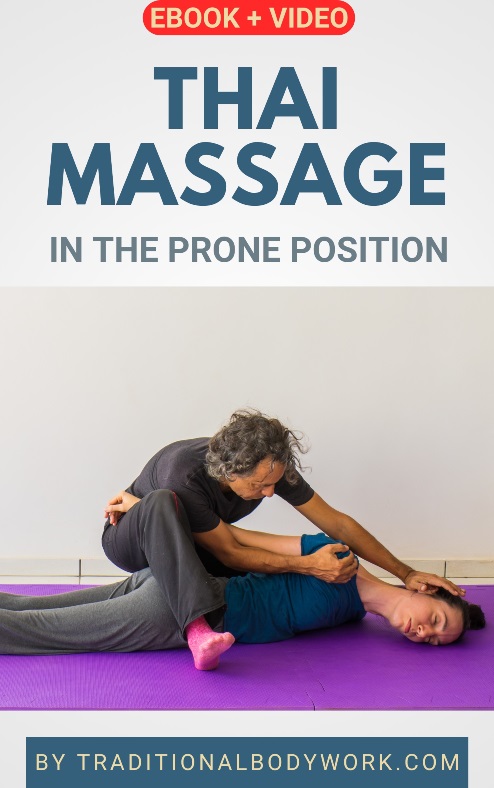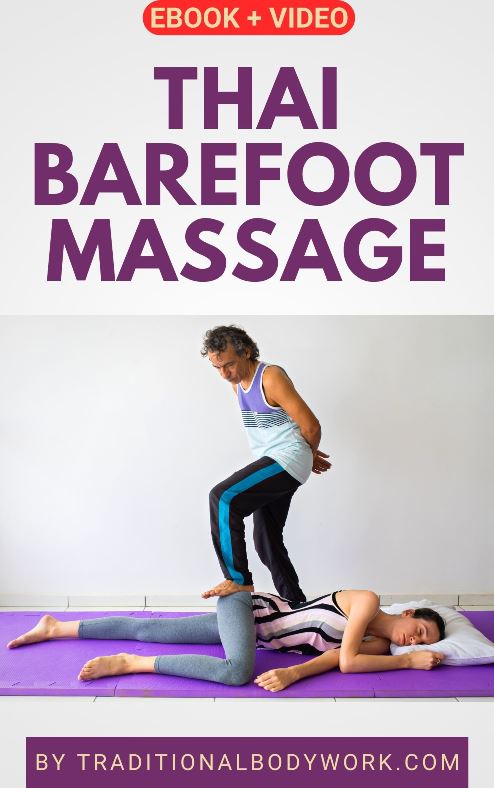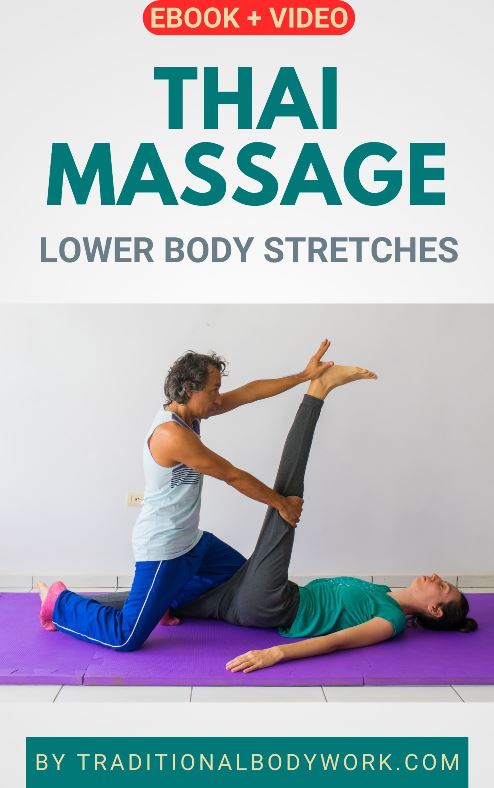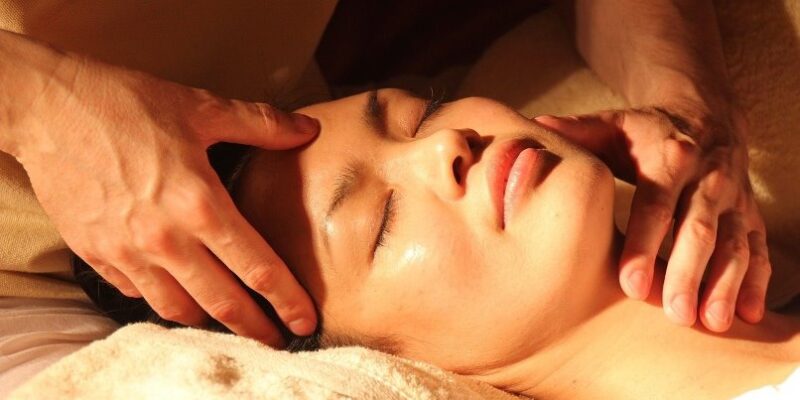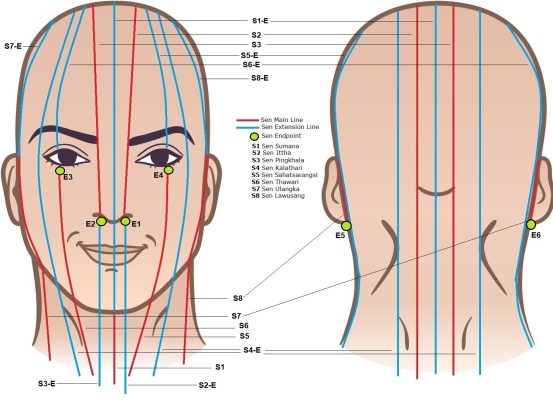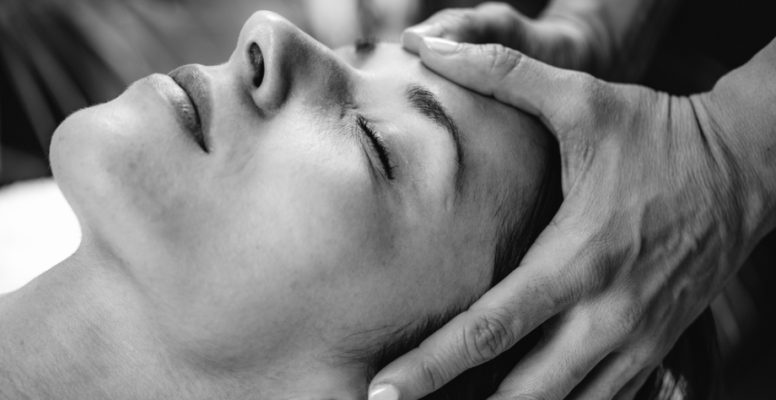
In this post, we’ll discuss the function of the most important Thai Acupressure Points around the ears, and how they are treated. In addition, we’ll also discuss how these pressure points relate to the corresponding TCM Acupoints in Traditional Chinese Medicine and to Marma Points in Ayurveda and Yoga.
Here further below we will explain pressure points H3, H7, H9 and H21, H22, H23, and in addition Sen Endpoints E5 and E6, which are all depicted in the chart (see the lead image of this post). These points can be found around the ears.
Thai Massage
In Thai Massage, acupressure points may be treated in various ways, such as with the knees, elbows, feet, herbal compresses, or special tools and devices, but they are usually manipulated with the thumbs or other fingers, which notably counts for treating the points located at the face and head (which are rather sensitive and delicate).

Typically you would press each point for a number of seconds, to then move on to another acupoint. You may also thumb-circle or finger-circle them gently. Nevertheless, how to treat them and for how long and how often also depends on the Thai Massage lineage, on the goal of the treatment, or on a given Thai Acupressure Protocol.
The acupressure points mentioned above are related to the Sen Lawusang main line (left side of the head, going around the left ear, and ending at the low part of the left ear) and the main line of Sen Ulangka (right side of the head, going around the right ear, and ending at the low part of the right ear).
H3, H7, and H9 can be found immediately next to the ears at the front side of the head (in the face area). They feel like little indents or depressions just where the ears are attached to the head. H3 can be found at the lowest part of the ear attachment, H7 at the middle, and H9 at the top part of the ear attachment to the head.
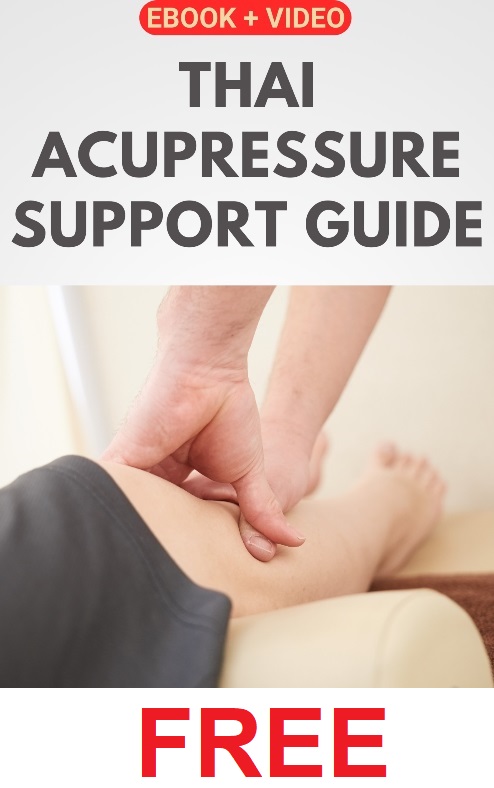
H21, H22, and H23 can be found immediately next to the ears at the back side of the ear. Just like the points at the front side of the ears, they feel like little indents or depressions just where the ears are attached to the head. H21 can be found at the lowest part of the ear attachment, H22 at the middle, and H23 at the top part of the ear attachment to the head.
For all these points the following therapeutic indications apply: headaches, ear disorders (deafness, impaired hearing, tinnitus), dizziness, convulsions, ear discharge (otorrhea), ear itching, ear infections, toothaches, and dysfunction of the temporomandibular joint (jaw joint) often abbreviated as TMJ. Jaw issues are treated especially through pressure point H7.
Sen Line Endpoints E5 (Sen Lawusang) and E6 (Sen Ulangka) would lie just below points H21 on the most upper part of the sternocleidomastoid neck muscle near and behind the lower part of the ear, being indicated for all ear dysfunctions, for neck disorders, such as neck stiffness and neck pains, and for some TMJ jaw problems.
Although the ear itself contains no major Thai Acupressure Points, they are considered reflex zones that correspond to the entire body. Hence, the entire ear can be pressed and massaged for health benefits, which is also a very relaxing experience for the receiver. In fact, when giving a Thai Facial and Head Massage, the outer ear parts are always included.
Ayurveda and Yoga
In Ayurveda and Yoga, there’s an important Marma Point that basically covers all indications for the aforementioned Thai Acupressure Points. This point is called Vidhura Marma and is indicated for ear dysfunctions (deafness, infections, tinnitus, and so on), but also for neck pain.
Vidhura Marma is most likely associated with points H21 behind both ears, but it may also be closely located or the same as E5 (Endpoint of Sen Lawusang) and E6 (Endpoint of Sen Ulangka). In Yoga and Ayurveda, point E5 is typically considered the termination point of Yashaswini Nadi and E6 the termination point of Pusha Nadi.
Traditional Chinese Medicine (TCM)

In Chinese Acupuncture and Chinese Acupressure, the points H3, H7, and H9 correspond to Tinghui or Ting Hui (GB-2 on the Gall Bladder Meridian), Tinggong or Ting Gong (SI-19 on the Small Intestine Meridian), and Ermen or Er Men (TB-21 on the Triple Burner Meridian).
Points H21, H22, and H23 correspond to Yifeng or Yi Feng (TB-17 on the Triple Burner Meridian), Chimai, Qimai, or Qi Mai (TB-18 on the Triple Burner Meridian) and Luxi or Lu Xi (TB-19 on the Triple Burner Meridian).
As a whole, all these Chinese Acupoints have the same therapeutic indications as the corresponding Thai Acupressure Points, but also add facial paralysis and cheek swelling treatment.



